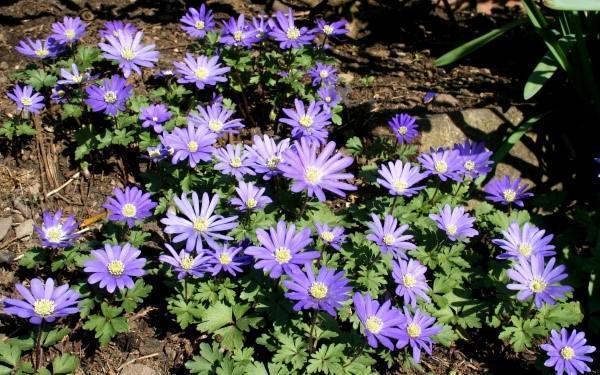Anemone blanda - spring primrose in your garden
 Anemone blanda is a very beautiful variety of anemones that every gardener dreams of seeing. An unpretentious, not capricious and delicate plant blooms almost immediately after the snow melts. What is so special about this flower and how to get it into your floral collection?
Anemone blanda is a very beautiful variety of anemones that every gardener dreams of seeing. An unpretentious, not capricious and delicate plant blooms almost immediately after the snow melts. What is so special about this flower and how to get it into your floral collection?
What does the plant look like?
Anemone blanda is a stunted plant. Some of its varieties do not exceed 10 cm in height. The maximum "growth" of an anemone of this species is 35 cm. The rhizome of the flower is tuberous. Deciduous and flower buds form at the top. The leaves are very interesting, delicate, green.
Anemone blanda blooms at the end of April. Inflorescences are small, 3 to 5 cm in diameter, each on a separate peduncle. Coloring can be very diverse (white, blue, pink) and even two-tone. You can admire their beauty for a short time, a maximum of three weeks. Then the leaves wither, and the flower goes to rest until next spring.
Anemone Blanda winters well in the open field and does not require digging. It also tolerates drought well, but excess moisture can destroy the flower.
Read:monarda - planting and care in the open field in spring.
Anemone blanda - planting and care features
You can plant an anemone both in spring and before winter. In the latter case, it is important to be in time before the frosts hit, so that the tubers take root. Before planting, the corms should be woken up. To do this, they must be placed in a shallow container and half filled with water.
Experienced flower growers advise filling the tubers with hot water, changing it daily for several days.
You can plant anemone blanda close to each other - just leave a couple of centimeters between the bulbs. She will not be cramped, and immediately after the end of flowering, the foliage quickly turns yellow and falls off. Some even often forget where the anemone grew, and dig up the site. To prevent this from happening, it is better to fence this place.
Determining which side to plant the tuber on is quite easy. It looks like a miniature beet and has a thickening in the upper part left after cutting the stem. This side should be facing up. You should not bury it deeply in the ground; it is enough to deepen by five centimeters.
If in doubt, it is best to sit the anemone on its side (lying down).
Care for anemone blanda is minimal and includes:
- Regular watering, especially after planting in the fall. The tubers should have time to take root, and the soil at this time is already dry.
- Mulchingwhich will help prevent rapid evaporation of moisture.
- Periodic fertilization with a mineral complex during flowering.
In conclusion, I would like to add that the abundance of blooming of the bland anemone depends on the lighting. The more sun there is in the flowerbed, the more magnificently the bush blooms.